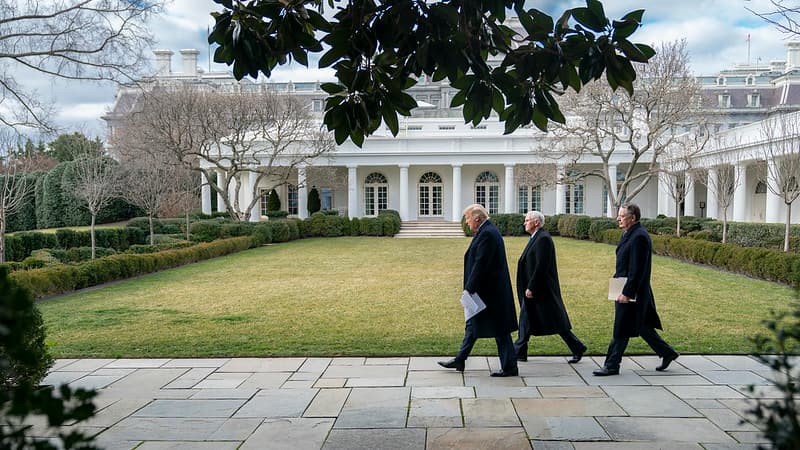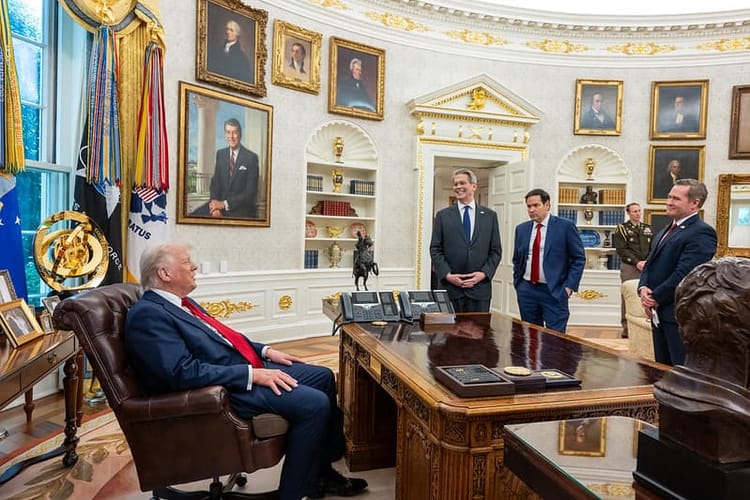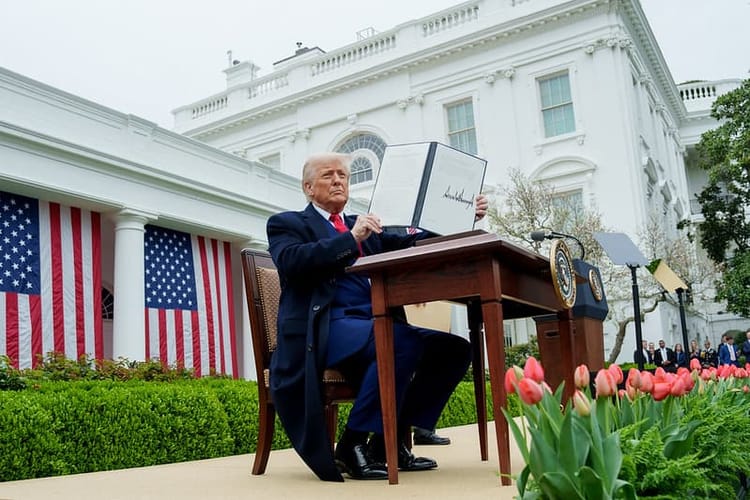How companies can build geopolitical resilience in the Trump 2.0 era

With a second Trump presidency on the horizon, businesses are facing certain uncertainty. They know that geopolitical volatility is likely, but the contours of that volatility are still unclear. Hopes that things will return to "business as usual" have proved to be wistful thinking. The Biden administration not only kept the vast majority of Trump's tariffs in place, but increased them on certain products, along with unleashing a barrage of new sanctions and export controls. With global trade rules and institutions in peril, the only thing that is certain going forward is that the world is not returning to the predictability and stability that made just-in-time supply chains and globalization possible over the past 50 years.
Today, trade is increasingly viewed as a national security lever, particularly in the U.S.-China relationship, and boardrooms must now cope with uncharted issues like strategic decoupling and supply chain sovereignty. Going forward, executives will increasingly find they must develop geopolitical savvy as a critical management skill alongside traditional business skills like finance, leadership, and communication. The most resilient organizations will be those that put in the work to integrate geopolitical awareness into their organization's culture and DNA.
Many executives are asking: what does that look like practically? Here are three steps every CEO can take to build what's been called "geopolitical muscle."
Turn on "geopolitical headlights" for events in the future
When driving at night on an unfamiliar road, no sane driver would turn off their headlights. Just as waiting to deal with hazards until you crash into them is ill-advised, the same goes for geopolitical risk. Like headlights on a car, geopolitical forecasting helps your business see obstacles and opportunities on the road ahead. It includes tools, processes, and routines that help your business anticipate and plan for potential future geopolitical events, such as:
- Scenario planning exercises
- Red team exercises
- Simulations of potential crises
- Systematic reviews of circulating policy proposals
Even if you aren't facing a crisis right now, integrating geopolitical forecasting practices into your business can reduce the damage when one arrives, while also helping you recognize and capitalize on emerging opportunities. These practices should be applied both to the steps of your value chain, and to your entire business as a whole, and should be revisited at regular intervals. The goal isn't to perfectly predict the future - it's to strengthen your organization's ability to proactively deal with uncertainty. Your team should systematically ask questions like:
- How might current political trends affect our industry in 3-5 years?
- Which previous policy actions foreshadow a broader regulatory trend?
- What opportunities might emerge from geopolitical shifts?
- What motivates key policymakers and their constituencies? What constrains them?
Geopolitics is human psychology at scale. The "geopolitical zeitgeist" includes the collective and individual experiences, beliefs and motivations of nations, politicians, policymakers, constituents, economists, experts, and other stakeholders who shape foreign policy. Humans who shape geopolitical trends are not coldly logical - they are influenced by things like nationalism, personal agendas and emotions like fear, ambition and ego. The more you can place yourself in key decision makers' shoes, the better your forecasts will be.
Build a "geopolitical radar" for events happening right now
Just as military radar detects incoming threats, businesses need a system to spot imminent threats before they do too much damage. Similarly, a "geopolitical radar" is an early warning system for your business. This isn't about reading more news; it's a process for systematically monitoring, analyzing, and, when necessary, escalating information about current geopolitical events.
Start by creating a monitoring framework. This should include:
- Reliable intelligence sources beyond mainstream media
- Priorities for analysis and selection of important signals
- A playbook of trigger events that will prompt specific actions
If your company is already using forecasting tools, you may already have a portfolio of scenarios. Using these, ask: "what events would tell us that this scenario is becoming a reality?" Your answer will help you define the important indicators and trigger events for your business. Even if none of your predictions turn out to be correct, knowing what triggers to watch for can help your team know that something is happening and raise the alarm in time to take action.
Far from being an unpredictable "black swan," Russia's 2022 invasion of Ukraine illustrates the importance of geopolitical monitoring. Many failed to recognize that Putin's nationalist rhetoric, his denial of Ukrainian identity and sovereignty, claims about threats to Russian speakers in Eastern Ukraine, threats regarding Ukraine's increasing alignment with the West, and his ambitions to restore Russia's dominance to that of the Soviet era were bellwethers for imminent conflict. Companies operating in Russia that missed these warning signs faced severe consequences, including millions or billions in losses when Western sanctions forced them to rapidly withdraw from the Russian market.
Embed geopolitical awareness into your organization's culture and processes
Geopolitical forecasting and monitoring are important but are of little use if the resulting insights don't influence decision-making. Geopolitical considerations must be woven into your organization's fabric, starting from the top down. This integration requires three key elements:
First, visible leadership commitment. The board and C-suite must consistently champion geopolitical capacity-building as a core value, not a checkbox. This means giving your company's geopolitics experts a seat at the table for strategic planning sessions and ensuring that geopolitical considerations are represented in key decisions.
Second, building capacity. Executive teams must commit time, money and attention to developing these capabilities. Whether through internal teams or external partners, your organization needs the ability to analyze and interpret geopolitical developments and forecast policy outcomes.
Third, cultural change. Employees throughout the organization should have ownership of how geopolitical factors affect their work, what information should be circulated to geopolitical specialists, and what signals should trigger alarm bells. They should actively seek geopolitical insights to inform decisions within their divisions without being told to do so. In other words, it's everyone's job to build their own geopolitical muscle. Your geopolitical specialists may hold the most sway on geopolitical recommendations, but their role should include building knowledge and skills across the organization.
The Cost of Inaction
Some CEOs might be tempted to bypass building geopolitical muscle and skip straight to strategies like diversifying suppliers, increasing inventory reserves, or improving supply chain visibility. These are all good practices, but without a geopolitical framework, taking these steps indiscriminately can create a false sense of security.
Consider a hypothetical company that diversifies manufacturing away from China to Vietnam or Mexico to avoid tariffs. Without good geopolitical awareness, the company may have failed to recognize that with billions of dollars of Chinese investment flowing to third countries, Western policymakers are actively seeking ways to counter Chinese-owned and subsidized manufacturing capacity regardless of its location. Unbeknownst to them, their new Vietnamese and Mexican partners are, in fact, subsidiaries of Chinese companies. After going through the time and expense of diversifying, the company is then broadsided when new rules regarding Chinese-owned suppliers are issued.
Losses from major geopolitical disruptions can far exceed 10% of revenue. The cost of ineffectively attempting risk mitigating strategies can be far greater than the investment needed to inform those strategies with robust geopolitical understandings.
Moving Forward
Building geopolitical resilience isn't a one-time project—it's a fundamental shift in how your company operates. Start by assessing your current capabilities against the three core areas described above. Where are the gaps? What quick wins could build momentum? Expert assistance can help your organization make up for lost time.
Again, the goal isn't to predict the future. It's to build the structures and expertise needed to navigate an increasingly volatile and complex business environment. The companies that thrive in the coming decades won't be those that try to avoid geopolitical complexity, but those that build capabilities to navigate it effectively.
Chris Siepmann is the Managing Director at Weller James, an advisory firm focused on geopolitical and policy analysis, geopolitical capacity-building and organizational transformation. Previously, he served as Director for Trade Enforcement at the Office of the U.S. Trade Representative during the first Trump administration and advised on the China Section 301 tariffs, among other issues. For further insights or support, click on "Contact" above.





